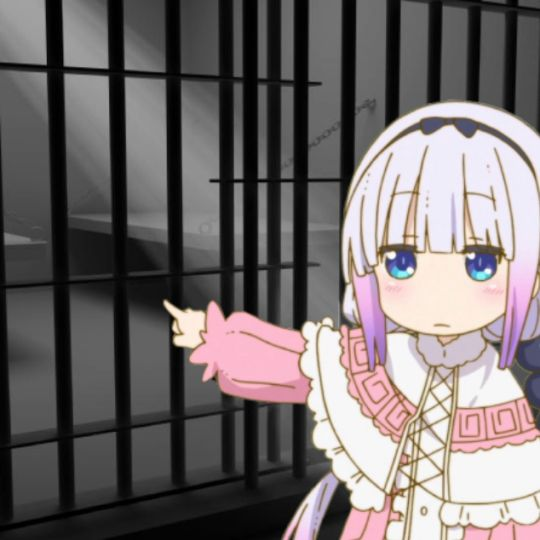Magic Maker - How to make magic in another world - - Chapter 84
Magic Maker – How to make magic in another world –
Chapter 84 Optimization
Second Laziness Syndrome Care Facility.
It’s already late at night.
However, the treatment continues.
In a large room, there’s me, Winona, the patients and their families, and accompanying doctors and nurses.
Further back, several beds are lined up with patients lying there.
Their families wait anxiously by their side.
The reason we’re conducting treatment at this hour is my suggestion.
However, the families of the patients agreed without hesitation.
From their perspective, they are grateful if the treatment can be done as soon as possible.
I recall families visiting the clinic in Istria late at night or early in the morning.
Anyone would want their family to recover quickly.
It was appreciated by me.
Asking for an extension of treatment time would be counterproductive as it would waste time.
I look down at the patient.
A man in his twenties.
The family consists of a young woman and an elderly couple.
Seemingly, his parents and fiancée.
While receiving the anxious gazes of the families, I remain composed and, as usual, place my hand on the patient’s chest.
However, it’s the “left hand.”
I usually use my dominant right hand for this.
To not miss any subtle sensations, I’ve been cautious and using my right hand.
However, having completed treatments for thousands in the past, I pride myself on considerable proficiency in treatment with my right hand.
Yet, the supply of magic from that right hand seems to be stagnating.
Through numerous experiences, I’m keenly aware of the sensation of magic supply in my hand.
It seems the growth of magic supply from my right hand has plateaued.
I’ve already treated over 200 people in this facility.
Using the experience gained from these 200 cases, I’ve attempted a more rapid supply of magic with my right hand.
Normally, I slowly increase the magic by increments of 5, cutting off the supply once the patient’s body is saturated with magic.
This is to minimize the risk of failure.
However, this method takes overwhelmingly more time.
Efficiency needs to be maximized, and the treatment must be completed safely.
There were some inefficiencies in the previous treatment methods.
Firstly, the fact that “the patient’s magic is generally around 100 to 300.”
It has never fallen below 100.
This applies to children as well, irrespective of gender.
If a person possesses magic, they invariably have over 100 magic.
In other words, it’s acceptable to supply magic without much caution up to 100.
The sensation of 100 magic is the one I remember the most.
Because before reaching the current level of magic, my external magic emission was only up to 90.
It’s something I did dozens of times every day.
I could even do it while sleeping.
Supply magic rapidly up to around 80.
Of course, not abruptly, but after several experiments to confirm a safe speed.
There is a possibility of adverse effects from a sudden supply.
In conclusion, there were none.
Ultimately, supplying up to 100 took a significantly shorter time, reducing the overall time by an average of about 20 seconds.
This is based on the assumption of patients with magic levels from 100 to 300, considering a certain number of patients and the overall reduction time on average.
Because if the patient is satisfied with a magic level of 100, the treatment can be done immediately.
If there are 100 patients, it means a reduction of approximately 33 minutes, or 2000 seconds, and with 700 patients to treat in a day, it translates to a reduction of about 231 minutes, or 3 hours and 51 minutes.
This is substantial.
In reality, a treatment that takes 1400 minutes can now be completed in 1169 minutes, or 19 hours and 29 minutes.
At worst, with 3 to 4 hours of sleep and shorter breaks, treatment seems feasible—but it’s not that simple.
Firstly, time other than treatment time is consumed.
It’s the time spent on movement.
Movement within the facility and movement to the next facility.
Internal movement takes a few seconds if close, but if distant, it can take several tens of seconds.
While it may not be significant for one instance, with 700 instances, it becomes a considerable amount of time.
And the number 700 is quite large for the population within one facility, necessitating the movement to three facilities.
The time for that movement is several tens of minutes.
In other words, the time saved through the efficiency of right-hand treatment is consumed by movement time.
I have already addressed this.
Just like in Istria, until now, I would move to the room where the patients were and conduct treatment.
After the treatment, the patients would be transported from outside, and the patients in the room would be transferred to their homes or another clinic.
That was the basic procedure.
However, in the capital city of Sanostria, the part about transferring patients after treatment was not applicable.
After treatment, the patients would continue to stay in those beds, and the postoperative course would be observed.
It’s quite a considerate and meticulous approach.
However, this approach is, at most, comprehensive follow-up for patients and not an essential part.
I don’t think that once the treatment is done, it should be left unattended.
I just believe that we should seek efficiency.
So, I asked the largest facility, known as the second lazy syndrome patient care facility within the facility, to transport patients from other facilities to this one as a starting point.
It imposes a significant burden, but in Istria, this was commonplace, and when it comes to treatment, no one seemed dissatisfied, perhaps because everyone wishes for a quick recovery.
While staying at the second facility, the doctors will rotate with each facility’s assigned doctors. Although it is burdensome, transporting patients is not that difficult, and, most importantly, it does not worsen the patients’ conditions.
I’ve come here by the Queen’s order, so there seems to be some flexibility, and if it’s challenging to move patients, arrangements can be made for a carriage.
As a result, patients from the third facility onwards were gradually gathered at the second facility, and I began treating them.
After treatment, each patient returns to their respective facility.
By the way, the patients from the second facility, after treatment, either get accommodated in another newly established facility or return home.
Furthermore, during treatment, to eliminate the time I spend on moving, I arranged for the patients to be moved to the largest room in the second facility.
Treating patients one by one, the patients treated would be moved back to their original facilities.
I treat the patient on the next bed, and in the meantime, a patient waiting is brought to the vacant bed.
This way, I can treat patients one after another by just moving within the room.
Through these measures, it became possible to minimize the wasted time due to movement.
At the current rate, taking about 1200 minutes a day, it should eventually be possible to treat all ten thousand patients.
However, it’s not that simple.
My magic power is a million, with a daily consumption ranging from a minimum of seventy thousand to a maximum of two hundred and ten thousand.
Magic is more than enough, and with sufficient rest, magic should recover.
So, what’s the problem?
The problem is not being able to rest sufficiently.
Let’s take the example of having ten thousand magic.
If half of the magic, around five thousand, is consumed, it would significantly recover with about eight hours of rest a day, but whether it would fully recover is a delicate balance.
The quality of rest matters, and time is crucial as a condition, but it’s not absolute.
If you can have a few hours of good sleep, the recovery amount will increase, but it’s not an easy thing.
Now, what about the current magic level?
With quite a large amount, even with normal rest, it wouldn’t fully recover if half, five hundred thousand, is consumed.
If five hundred thousand is consumed, even with eight hours of sleep, it might only recover halfway.
The recovery speed and the required quality of recovery differ between ten thousand and a million magic.
Using a million magic is not common, and concerning the treatment in Istria, I had received quite a bit of sleep.
One significant reason was being persuaded by those around me that it’s meaningless if I collapse, but I myself realized that magic wouldn’t fully recover without proper rest.
Additionally, the recovery amount varies depending on the fatigue of the body and mind.
If you take the same amount of sleep in a completely exhausted state and a lively state, the latter will result in significantly more recovery.
Let’s allocate about three hours to sleep and about fifty minutes to rest within the secured 240 minutes.
If you dedicate 19 hours a day to treatment, it would be quite exhausting.
Consuming magic is also consuming physical strength.
In such a state, being able to sleep for only three hours, if it continues for two weeks.
Without a doubt, magic will eventually run out.
This is just a current calculation, but probably around ten days later, the magic will likely run out, and I won’t be able to perform treatment.
If that happens, it will be close to a state of magic exhaustion, and I will lose the will to treat.
It’s truly a situation where priorities are flipped.
This way, it’s meaningless.
So, what I came up with was to “use my left hand.”
Now, after a lengthy explanation, let’s get back to the main topic.
In the large room of the second facility, I am treating patients with my left hand.
The time it takes is now longer than before.
But this is necessary.
I spent about twice the usual time, treating the patient.
“Wh-where am I…? What… happened?”
“H-he spoke. Oh, he spoke! That boy spoke!”
“Ah, yes… I spoke. I-I spoke, just like usual…”
“Henry… ugh.”
It became clear that the treatment was successful, and the parents cried tears of joy, while the fiancée clung to him, crying.
It’s good. It seems I was able to cure him.
Of course, I didn’t do it haphazardly, and if there were any issues, I planned to either interrupt the treatment or switch to using my right hand.
There’s no danger. With my accumulated experience, I can detect any issues immediately.
It seems there were “no problems at all” with the left-hand treatment.
However, it took time.
“It seems possible to treat with both hands simultaneously.”
If the right hand treatment takes about 1 minute and 40 seconds, the left hand takes about 4 minutes.
Even after the right-hand treatment is done, the left-hand treatment continues. So, the patient treated with the right hand is moved, and the patient treated with the left hand remains in place.
In this case, the burden falls on the nurses.
For the transfer, each person needs to be brought to a bed near me.
It is their job, so there may be no need to hesitate since they also want to speed up patient treatment.
If treating with both hands, while treating two with the right hand, one can be treated with the left hand.
By rough calculation, it would be possible to treat all patients in about 932 minutes, or approximately 15 hours and 32 minutes.
There would be more than 8 hours of free time each day.
However, considering breaks and unforeseen circumstances, it would be cutting it close.
Also, the number of patients treated on the first day is insufficient.
Currently, I have treated about 400 people, but it’s late at night, and about 300 treatments are delayed.
An additional 400 minutes, or 6 hours and 40 minutes, of extra time will be needed.
If there are two weeks, this time can be made up, but considering the current required time, it’s tight, and there is no margin.
Moreover, I am not yet accustomed to treating with my left hand, and I still feel uneasy about suddenly treating with both hands.
I would like to try with about 100 more patients.
During that time, twice the usual time will be needed.
With this in mind, time is running out.
I am being chased by time.
Anyway, I have to do it.
While I am treating, Winona has been accompanying me.
While treating the next patient, I say to Winona behind me.
“I’ll say it again, Winona, you’re free to take breaks. As for assisting with the treatment, I’ll rely on the nurses, so don’t worry.”
“N-No, I’m here. I-I am Shion-sama’s maid, after all.”
With that settled.
Even if I say she can take a break, if I don’t take one, she won’t insist on it.
Despite being clearly frightened and putting up a barrier between us, she unwaveringly treats me as her master.
Is it her pride, or is she just rationalizing it as part of her job?
No matter how many times I say it, it’s always the same, and nothing I say seems to get through.
I feel bad about it, but I want to prioritize treating the patients.
If I continue to treat with all my might, the path will surely open up.
I treat the patients, sharpening my senses, with a strong determination.
































